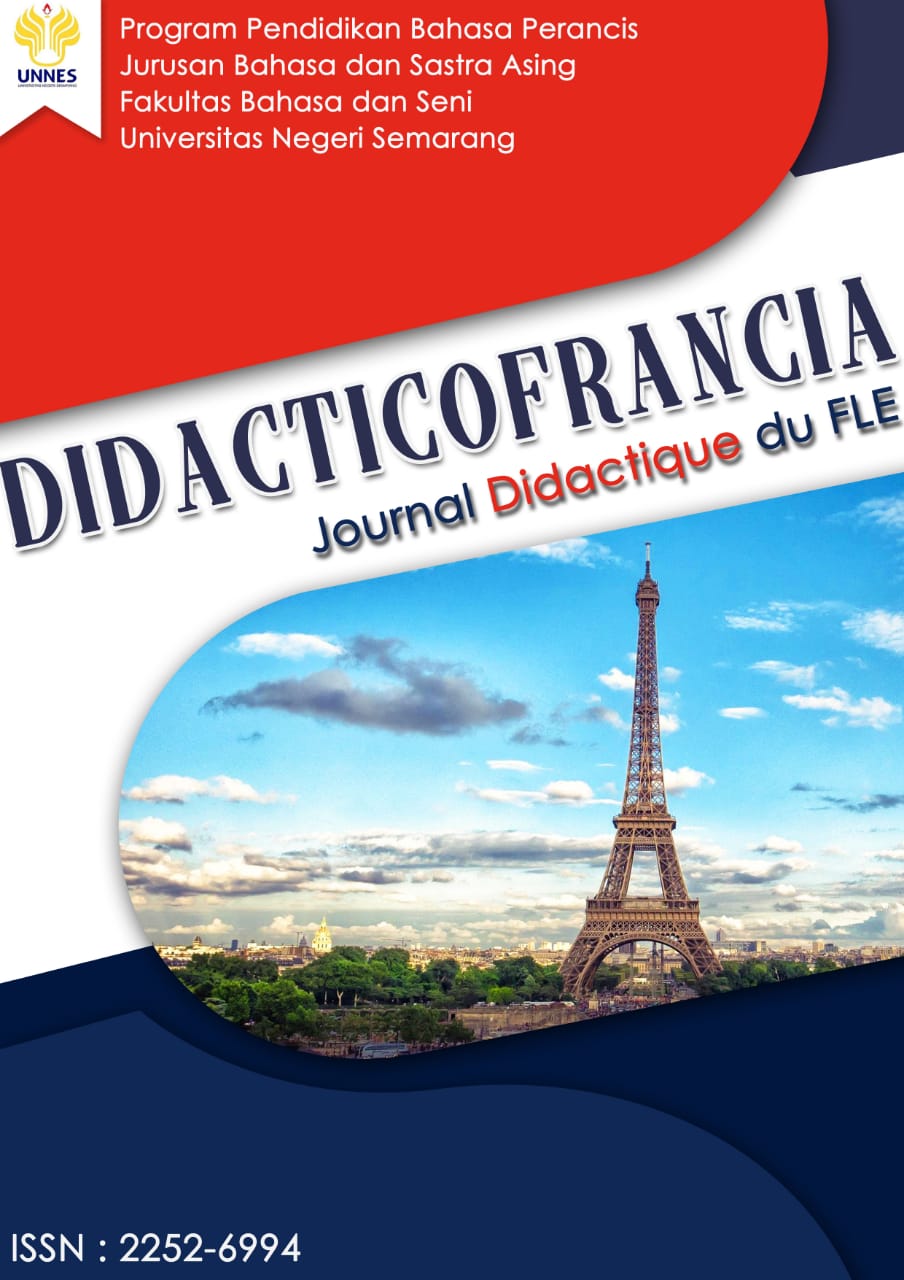Préférence de l’enseignant de français entre la classe virtuelle et présentielle
Abstract
Cette recherche a pour but de déterminer les préférences de l’enseignant de français vis-à- vis de la méthode d'apprentissage utilisée pour apprendre le français avec une méthode d'apprentissage en ligne ou hors ligne. afin qu'il puisse produire des apprentissages appropriés et adaptés aux élèves. L'objet de cette recherche est 9 enseignants français du MGMP. les résultats du calcul du questionnaire où, dans la section de planification de l'apprentissage, les résultats étaient de 88,9 % d'apprentissage hors ligne et de 11, 1 % d'apprentissage en ligne. Ensuite dans la mise en œuvre de l'apprentissage avec les résultats de 88,9% d'apprentissage hors ligne et 11,1% d'apprentissage en ligne. La dernière partie du questionnaire, l'évaluation de l'apprentissage avec les résultats de 89,91% d'apprentissage hors ligne et 10,09% d'apprentissage en ligne. Par conséquent, la recherche sur les préférences des enseignants français avec des modèles d'apprentissage en ligne ou hors ligne montre que les enseignants français préfèrent la mise en œuvre du processus d'apprentissage du français hors ligne
The purpose of this study is to determine the preferences of French teachers to the learning methode used in learning French with an online or offline learning methode. so that it can produce appropriate and suitable learning for students. The object of this research is 9 French MGMP teachers. the results of the calculation of the questionnaire where in the learning planning section the results were 88.9% offline learning and 11, 1% online learning. Then in the implementation of learning with the results of 88.9% offline learning and 11.1% online learning. The final part of the questionnaire, learning assessment with the results of 89,91% offline learning and 10,09% online learning. Therefore, research on the preferences of French teachers with online or offline learning models shows that French teachers prefer the implementation of the French learning process offline
References
Hakim, T. 2005. Belajar Secara Efektif. Niaga Swadaya.
Hasbullah, and Supardi Uki Sajiman. 2020. “Persepsi Siswa Atas Pembelajaran Matematika Di Era New Normal.” 8(58): 238–44.
Malyana, Andasia. 2020. “Pelaksanaan Pembelajaran Daring Dan Luring Dengan Metode Bimbingan Berkelanjutan Pada Guru Sekolah Dasar Di Teluk Betung Utara Bandar Lampung.” Jurnal Ilmiah Pendidikan Dasar Indonesia 2(1): 67–76.
Moore, J. L., Dickson-Deane, C., & Galyen, K. (2011). E-Learning, online learning, and distance learning environments: Are they the same? The Internet and Higher Education, 14(2), 129–135.
Rachman, Lukman Arif, Sudiyono Sudiyono, and Elzi Phonix. 2021. “The Blended Learning Implementation of Elt Based on Teachers and Students’ Perspective in New Normal Condition of Covid 19.” PROJECT (Professional Journal of English Education) 4(3): 457.
Sadikin, Ali. 2020. “Pembelajaran Daring Di Tengah Wabah Covid-19.” Jurnal Ilmiah Pendidikan Biologi 6(2): 214–24.
Sudijono, Anas. 2006. Pengantar Statistik Pendidikan. Jakarta: PT Raja Grafindo Persada.
Sugiyono. 2008. Statistika untuk Penelitian. Bandung: Alfabeta.









